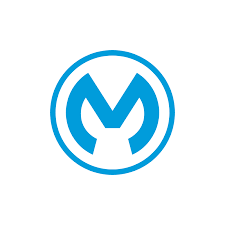Integrating Google Drive with MuleSoft OAuth 2.0 Setup Guide

Integrating Google Drive with MuleSoft: A Step-by-Step OAuth 2.0 Setup Guide
Step1:- To get started, open the Google Developer Console. If you haven't already created a project, click on "Select a project" at the top of the page and then choose "New Project". Provide a name for your project and click "Create”.
Step2:- Once your project is created, navigate to the "Credentials" tab in the left-hand menu of the Google Developer Console. Click on the "Create Credentials" button and select "OAuth 2.0 Client ID" from the dropdown. This will allow your application to securely access Google Drive on behalf of the user by enabling OAuth 2.0 authentication.
Step3:- If you haven’t already configured the OAuth consent screen, you will be prompted to do so before creating the OAuth Client ID. Select "OAuth consent screen" from the menu and choose "External" as the user type if your application will be used by people outside your organization. Fill in the required fields such as the application name, user support email, and developer contact information. Once completed, click "Save and Continue" to proceed. This step ensures that users are informed about what access your app is requesting during the OAuth authorization flow.
Under Create OAuth client ID, select the application type as Web application.
In the Authorized redirect URIs field, enter the URI http://localhost:8081/authorize (this is where the user will be redirected after authentication).
Afterward, click Create.
Step4:- Obtain Client ID and Client Secret .Once your OAuth Client ID is created, you will be provided with a Client ID and Client Secret.Make sure to copy both of these credentials, as you will need them in the next step for configuring MuleSoft.
Step5:- To enable access to Google Drive, navigate to the "Library" section within the Google Developer Console. In the search bar, type "Google Drive API" and select it from the search results. Click the "Enable" button to activate the API for your project. This step allows your MuleSoft application to interact with Google Drive using authorized API requests.
MuleSoft Configuration:
Download Google Drive Connector from MuleSoft Exchange:-
1.Open MuleSoft Anypoint Studio and go to the Exchange tab.Search for Google Drive Connector and download it into your Mule project.Configure Google Drive Connector in MuleSoft
2.Drag the Google Drive Connector into your flow. In the Drive Files List operation, you’ll need to configure the connector to interact with the Google Drive API.
3.Client ID: Use the Client ID obtained earlier from the Google Developer Console.
4.Client Secret: Use the Client Secret from the Google Developer Console.
Redirect URI: Use the URI http://localhost:8081/authorize, which you entered in the Google Developer Console earlier.
Handle OAuth Authorization
After configuring the Google Drive Connector, run the Mule project.
Navigate to http://localhost:8081/authorize to begin the authorization process. This will trigger a Google login page where the user will grant necessary permissions to your application.
After successful authorization, Google will redirect to the provided redirect URI (http://localhost:8081/authorize), where MuleSoft will handle the authorization code exchange to obtain an Access Token and Refresh Token.
Use the Google Drive API
Once authorization is complete, MuleSoft will use the Access Token to make authorized requests to the Google Drive API, such as listing files, uploading, and downloading from Google Drive.
Final Notes:
Ensure that the Redirect URI configured in both Google Developer Console and MuleSoft matches exactly (e.g., http://localhost:8081/authorize).
The Client ID and Client Secret should remain secure and should never be exposed in the source code.
Once everything is configured, you can now interact with Google Drive through MuleSoft using the Google Drive Connector.